![A transport of Jewish prisoners marches through the snow from the Bauschovitz train station to Theresienstadt. [LCID: 69720]](https://encyclopedia.ushmm.org/images/large/781755a6-1ba5-4d8e-8b2b-9f25bdf3687f.jpg)
Browse an alphabetical list of photographs. These historical images portray people, places, and events before, during, and after World War II and the Holocaust.
<< Previous | Displaying results 1-25 of 73 for "Photo" | Next >>
Sections of V-2 rockets, the so-called Vengeance Weapons, are removed by rail from the Dora-Mittelbau camp after liberation. Near Nordhausen, Germany, June 1945.
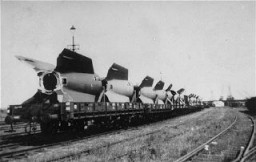
The valuables displayed here were confiscated from prisoners by German guards at the Buchenwald concentration camp and later found by soldiers of the Third US Army after the liberation of the camp. Buchenwald, Germany, after April 1945.
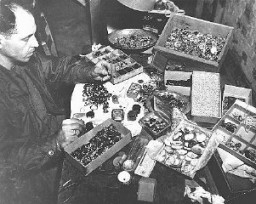
Antisemitic graffiti on the window of a Jewish-owned store. Norway, wartime.
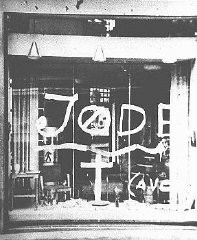
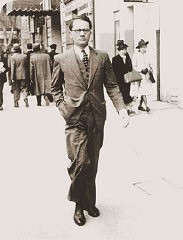
Varian Fry looks out over an expanse of land, around the year 1940-1941. This may be the Spanish frontier. At this time, Spain was one of the only remaining exit routes out of occupied Europe.

King Faisal of Saudi Arabia regularly presented copies of this edition of the Protocols to state visitors during the early 1970s. Published in Karachi, Pakistan, 1969. Courtesy of Hassan Mneimneh.
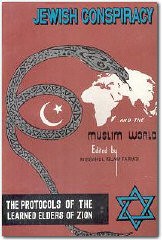
A ten-year-old Polish girl, Kazimiera Mika, mourns the death of her older sister, who was killed in a field in Warsaw, Poland, during a German air raid. Photographed by US documentary filmmaker, Julien Bryan, on September 13, 1939.

A Soviet prisoner of war, victim of a tuberculosis medical experiment at Neuengamme concentration camp. Germany, late 1944.
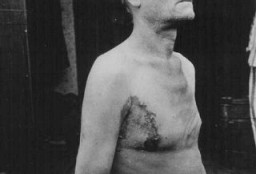
Scene after the liberation of the Auschwitz camp: a warehouse of clothes that belonged to women who were murdered there. Auschwitz, Poland, after January 1945.
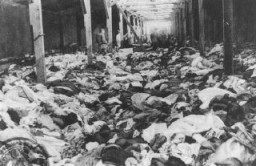
Burned bodies of former prisoners of Rottleberode, a subcamp of Dora-Mittelbau, lie near the entrance to a barn that had been set on fire by SS troops while the prisoners were on a death march. Gardelegen, Germany, April 18, 1945.

Along the route from Iasi to either Calarasi or Podul IIoaei, Romanians remove corpses from a train carrying Jews deported from Iasi following a pogrom. Romania, late June or early July 1941.

US troops view bodies of victims of Kaufering IV, a Dachau subcamp in the Landsberg-Kaufering area. Germany, April 30, 1945.
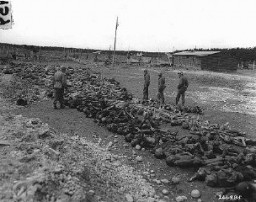
Victims of German SS and Hungarian Arrow Cross terror in the Budapest ghetto. The bodies were found in the courtyard of the Pestor synagogue on Dohany Street. Budapest, Hungary, January 1945.
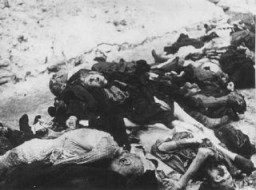
A wagon is piled high with the bodies of victims of the Buchenwald concentration camp. Photograph taken following the liberation of the camp. Buchenwald, Germany, April 16, 1945.
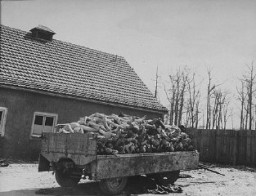
A wagon is piled with the bodies of victims of the Buchenwald concentration camp. Photograph taken following the liberation of the camp. The 6th Armored Division overran the camp on April 11, 1945. Buchenwald, Germany, April 11–May 1945.
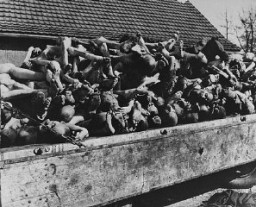
American soldiers look at the exhumed bodies of prisoners who were burned alive in a barn outside Gardelegen. Germany, April 14-18, 1945.
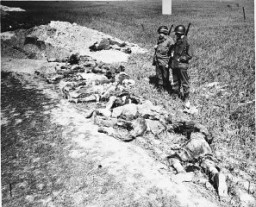
At the Klooga concentration camp, Soviet soldiers examine the bodies of victims left by the retreating Germans. Klooga, Estonia, September 1944.
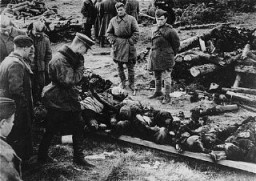
A Soviet soldier walks through a mound of victims' shoes piled outside a warehouse in Majdanek soon after the liberation. Majdanek, Poland, August 1944.
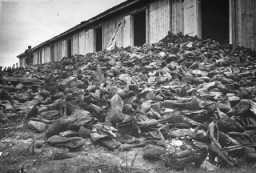
Regina met Victor Gelb, a young Jewish American, in 1950 in Brooklyn. Victor had been drafted into the Korean War. This photograph shows Victor (left) in September 1952.With the end of World War II and collapse of the Nazi regime, survivors of the Holocaust faced the daunting task of rebuilding their lives. With little in the way of financial resources and few, if any, surviving family members, most eventually emigrated from Europe to start their lives again. Between 1945 and 1952, more than 80,000…
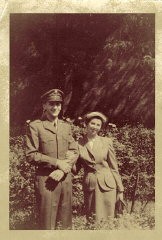
Vidkun Quisling, pro-German Norwegian Fascist leader. Pictured here addressing supporters of his Norwegian Nazi party at a rally. Oslo, Norway, August 1941.
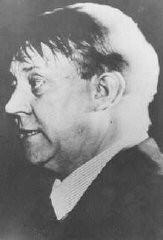
Vidkun Quisling, leader of the collaborationist Norwegian government, returns a salute during a ceremony in Oslo. Norway, after April 1940.
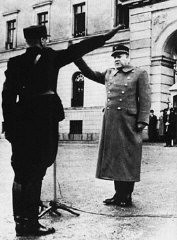
Nyanza is a site near Kigali, Rwanda, where several thousand people were executed after being marched from the Belgian Technical School in April 1994. At the school, they had been under the protection of UN peacekeepers until the soldiers were recalled to the airport to help evacuate expatriates. This is one of the few sites where victims had the honor of individual burial; most often they were buried together in large graves. Photograph taken on November 24, 2007.United States Holocaust Memorial Museum
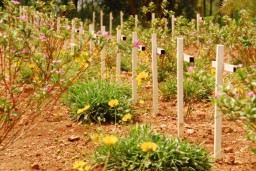
View of a criminal wing in the prison at Nuremberg, housing war crimes trials defendants. Baltic guards under the supervision of American authorities patrol the wing and keep constant watch over the prisoners. The upper floors are screened off with heavy chicken wire to discourage suicide attempts. Nuremberg, Germany, between November 20, 1945, and October 1, 1946.
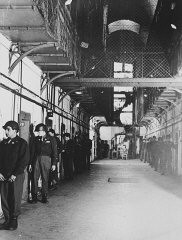
View of the industrial section of the Plaszow camp. Plaszow, Poland, 1944.
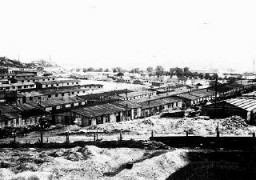
View of the kitchen barracks, the electrified fence, and the gate at the main camp of Auschwitz (Auschwitz I). In the foreground is the sign "Arbeit Macht Frei." This photograph was taken after the liberation of the camp by Soviet forces. Auschwitz, Poland, 1945.
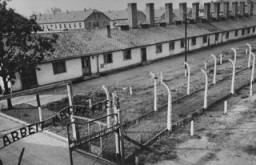
We would like to thank Crown Family Philanthropies, Abe and Ida Cooper Foundation, the Claims Conference, EVZ, and BMF for supporting the ongoing work to create content and resources for the Holocaust Encyclopedia. View the list of donor acknowledgement.